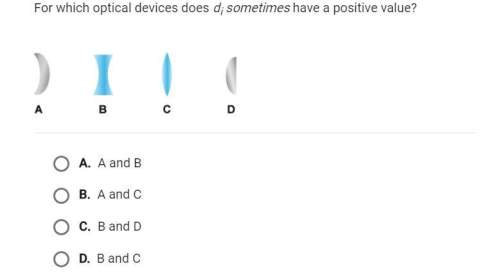
Physics, 06.05.2020 05:44 kenaygardel
To understand that contact between rolling objects and what they roll against imposes constraints on the change in position(velocity) and angle (angular velocity).
The way in which a body makes contact with the world often imposes a constraint relationship between its possible rotation and translational motion. A ball rolling on a road, a yo-yo unwinding as it falls, and a baseball leaving the pitcher's hand are all examples of constrained rotation and translation. In a similar manner, the rotation of one body and the translation of another may be constrained, as happens when a fireman unrolls a hose from its storage drum.
Situations like these can be modeled by constraint equations, relating the coupled angular and linear motions. Although these equations fundamentally involve position (the angle of the wheel at a particular distance down the road), it is usually the relationship of velocities and accelerations that are relevant in solving a problem involving such constraints. The velocities are needed in the conservation equations for momentum and angular momentum, and the accelerations are needed for the dynamical equations.
It is important to use the standard sign conventions: positive for counterclockwise rotation and positive for motion toward the right. Otherwise, your dynamical equations will have to be modified. Unfortunately, a frequent result will be the appearance of negative signs in the constraint equations.
Consider a measuring tape unwinding from a drum of radius r. The center of the drum is not moving; the tape unwinds as its free end is pulled away from the drum. Neglect the thickness of the tape, so that the radius of the drum can be assumed not to change as the tape unwinds. In this case, the standard conventions for the angular velocity ω and for the (translational) velocity v of the end of the tape result in a constraint equation with a positive sign (e. g., if v > 0, that is, the tape is unwinding, then ω > 0 also).
(a) Assume that the function x(t) represents the length of tape that has unwound as a function of time. Find θ(t), the angle through which the drum will have rotated, as a function of time.
Answer in terms of x(t) and other given quantities from the problem introduction.
(b) The tape is now wound back into the drum at angular rate ω(t). With what speed will the end of the tape move? (Note that our drawing specifies that a positive derivative of x(t) implies motion away from the drum. Be careful with your signs! The fact that the tape is being wound back into the drum implies that ω(t) < 0, and for the end of the tape to move closer to the drum, it must be the case that v(t) < 0.
Answer in terms of ω(t) and other given quantities from the problem introduction.
(c) Perhaps the trickiest aspect of working with constraint equations for rotational motion is determining the correct sign for the kinematic quantities. Consider a tire of radius rolling to the right, without slipping, with constant x velocity vx. Find ω, the (constant) angular velocity of the tire. Be careful of the signs in your answer; recall that positive angular velocity corresponds to rotation in the counterclockwise direction.
Express your answer in terms of vx and r.
(d) Assume now that the angular velocity of the tire, which continues to roll without slipping, is not constant, but rather that the tire accelerates with constant angular acceleration a. Find ax, the linear acceleration of the tire.

Answers: 3
Another question on Physics

Physics, 21.06.2019 20:30
When a book falls from a shelf to the ground without anyone pushing on it, no work is done on the book. true or false
Answers: 1

Physics, 21.06.2019 23:00
Asubmarine has a "crush depth" (that is, the depth at which water pressure will crush the submarine) of 250 m. what is the approximate pressure (water plus atmospheric) at this depth? (recall that the density of seawater is 1025 kg/m3, g = 9.81 m/s2, and 1 kg/(ms2) = 1 pa = 9.8692 10-6 atm.) a. 34.8 atm b. 24.8 atm c. 25.8 atm d. 7.8 atm
Answers: 2

Physics, 22.06.2019 08:00
Which graph represents motion with an object with positive velocity that is located at a position of 3 meters at a time of 0 seconds? a) a b) bb eliminate c) c d) d
Answers: 1

You know the right answer?
To understand that contact between rolling objects and what they roll against imposes constraints on...
Questions




Arts, 03.10.2021 20:50


Mathematics, 03.10.2021 20:50




Mathematics, 03.10.2021 20:50


Biology, 03.10.2021 20:50



Mathematics, 03.10.2021 20:50

Physics, 03.10.2021 20:50


Mathematics, 03.10.2021 20:50


Mathematics, 03.10.2021 20:50




